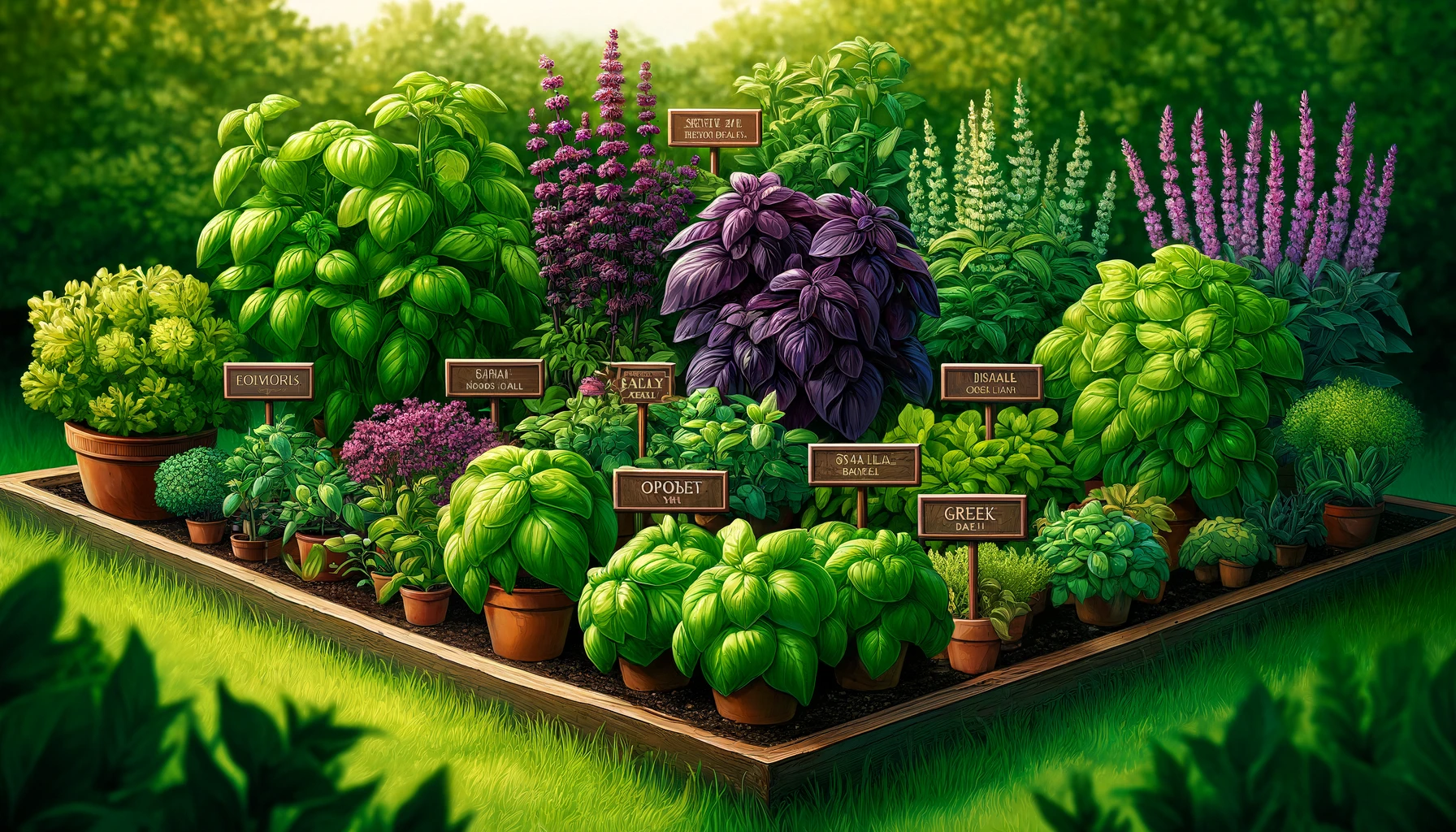Diverse Kinds of Basil Varieties and Uses
Basil (Ocimum basilicum) is a beloved herb known for its aromatic leaves and essential role in many culinary traditions. Its diverse varieties offer a range of flavors, colors, and uses. We’ll explore several types of basil, detailing their unique characteristics and applications.
Most basil varieties are very easy to grow hydroponically. For that reason, growing basil is simply a joy and very fun. Each variety of basil can taste uniquely different. That’s why I like to grow many types in my garden.
Learn the most popular basil varieties below.

Kratky Hydroponic Basil – Grow Many Varieties
Advertisement
I bought these CZ net cups and will never buy another brand. They have been used year over year 5+ years.
I love these gro-block rockwool cubes. They keep the rockwool off your hands and soak well.
Before I got these, I used clay pebbles and/or foam cutouts. These fit so much better and block all light.
This is only wishlist. I plan on trying these in the the fall. You can see in my pics I currently use tin foil.
As an Amazon Associate I earn from qualifying purchases.
Types of Basil
Sweet Basil (Ocimum basilicum)
Description
Sweet Basil, the most common variety, features large, smooth, and vibrant green leaves. It is widely used in Italian cuisine, especially in pesto and tomato-based dishes.
Uses
- Pesto sauce
- Tomato salads
- Pasta dishes
- Pizza toppings
Thai Basil (Ocimum basilicum var. thyrsiflora)
Description
Thai Basil has smaller, pointed leaves with a slight purple hue and a strong anise or licorice flavor. It is a staple in Southeast Asian cuisine.
Uses
- Thai curries
- Pho (Vietnamese soup)
- Stir-fries
- Spring rolls
Lemon Basil (Ocimum × citriodorum)
Description
Lemon Basil has a distinctive lemon scent and flavor, with narrow leaves and white flowers. It is often used to impart a citrusy note to dishes.
Uses
- Lemon basil chicken
- Herbal teas
- Salad dressings
- Fish dishes
Greek Basil (Ocimum basilicum var. minimum)
Description
Greek Basil is a compact plant with small, dense leaves and a mild flavor. It is well-suited for container gardening and makes a great ornamental plant.
Uses
- Garnishes
- Fresh salads
- Herb blends
- Potpourri
Purple Basil (Ocimum basilicum ‘Purpurascens’)
Description
Purple Basil, also known as Opal Basil, boasts striking dark purple leaves and a slightly spicy flavor. It adds a colorful touch to dishes and gardens.
Uses
- Vinegars
- Salads
- Decorative garnishes
- Infused oils
Lesser-Known Varieties
Lettuce Leaf Basil (Ocimum basilicum ‘Crispum’)
Description
Lettuce Leaf Basil has large, crinkled leaves resembling lettuce, with a mild and slightly sweet flavor. It is ideal for wrapping and stuffing.
Uses
- Wraps and rolls
- Sandwiches
- Salads
- Pesto
Holy Basil (Ocimum tenuiflorum)
Description
Holy Basil, or Tulsi, is revered in Ayurvedic medicine and known for its medicinal properties. It has a clove-like flavor and is often used in teas.
Uses
- Herbal teas
- Medicinal extracts
- Religious rituals
- Stress relief remedies
Cinnamon Basil (Ocimum basilicum ‘Cinnamon’)
Description
Cinnamon Basil has a warm, spicy aroma reminiscent of cinnamon. Its green leaves with purple stems make it visually appealing.
Uses
- Desserts
- Fruit salads
- Beverages
- Spiced dishes
Cultivation Tips
Soil and Sunlight
Basil thrives in well-drained soil with plenty of organic matter. It requires full sunlight, at least six to eight hours a day, to grow vigorously.
Watering
Regular watering is essential, but basil prefers slightly dry conditions between waterings. Avoid waterlogging, which can cause root rot.
Harvesting
Harvest basil leaves regularly to encourage bushy growth. Pinch off the flowering tops to prevent the plant from bolting and to prolong leaf production.
Pests and Diseases
Common pests include aphids, slugs, and Japanese beetles. Fungal diseases like downy mildew can also affect basil. Regular inspection and organic treatments can help manage these issues.
Grow All Kinds of Basil
Basil’s versatility and variety make it a must-have herb for any kitchen garden. From the classic Sweet Basil to the exotic Thai Basil, each type offers unique flavors and uses, enriching culinary experiences around the world.





